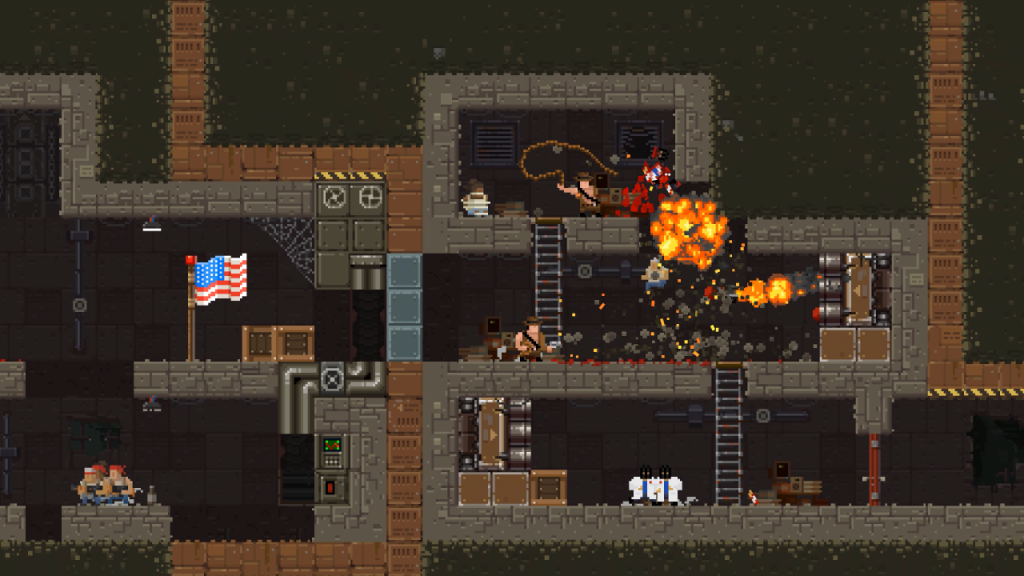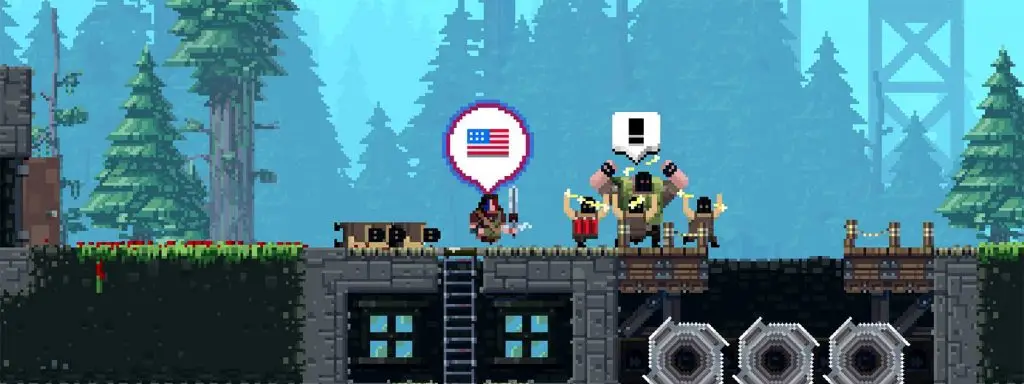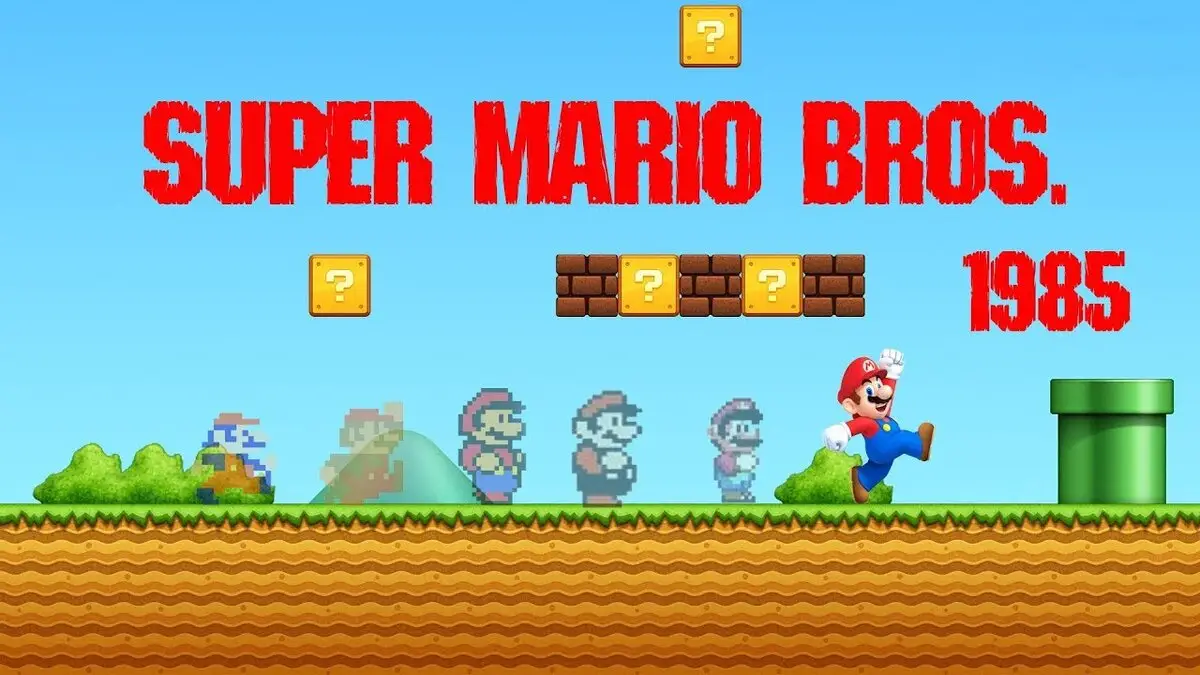The review of the platformer Broforce cannot be called a typical analysis of an arcade game, as the project combines high dynamics, destructible levels, crazy gameplay and a parody style that refers to the iconic action films of the 80s and 90s. The concept was developed by the Free Lives studio and offers a cooperative mode, large-scale explosions and uncompromising action in the spirit of old arcades. Each mission turns into chaos of shooting, destruction and bright special effects. The gameplay is focused on speed, reflexes, and destruction, as almost every object on the map can be destroyed, and the physics of the world creates unique situations in the races.
Broforce Gameplay Review: A Dynamic and Destructible Platformer World
The gameplay of Broforce is based on platform mechanics, where characters fight hordes of enemies using a variety of weapons and unique abilities. An important feature is the destructible environment, which provides tactical opportunities. Instead of traditional combat, players can bring down buildings on their enemies, detonate platforms, or create traps using debris.

Each level begins with a random character selection, with each character possessing individual weapons, attacks, and abilities. Among the playable characters are references to iconic movie characters such as Rambo, Terminator, John McClane, and more. As the game progresses, the difficulty of the missions increases, and the number of enemies, traps, and obstacles increases, forcing players to adapt to the dynamic combat system. Enemies range from ordinary soldiers to powerful combat vehicles, requiring different battle tactics.
Broforce heroes are parody versions of iconic characters
The game features:
- Rambro is a reference to Rambo, who uses an assault rifle and grenades.
- Brommando is a version of John Matrix from the movie Commando, with heavy weapons and explosives.
- Bro Dredd is a parody of Judge Dredd who uses powerful laser weapons.
- The Bro In Black is an agent in a black suit who wields a memory neutralizer and plasma cannons.
Broforce Level Overview – Destruction as a Platformer Gameplay Element
Each mode in the project creates new challenges, offering not only shooting but also the use of destructible environments for tactical purposes. The maps include buildings, bridges, caves, military bases, and jungles that can be blown up and modified in real-time. The environment becomes a part of the gameplay, as collapsing structures can both help eliminate enemies and create difficulties for the player.
Broforce bosses – difficult battles and giant enemies
At the end of some missions, there are epic bosses that require special tactics and strategies. These include:
- Combat helicopters attacking with missiles and machine guns.
- Giant mechs that can level the land.
- Huge monsters that use devastating attacks.
Boss battles require mobility, use of the environment, and a well-chosen weapon, as each encounter becomes a real challenge.
Co-op in Broforce: A Review of the Platformer’s Team Mode
 The co-op mode turns every mission into a frenzied action, where destructibility and dynamism reach a new level. Playing with friends allows you to use coordination, tactics, and combo attacks to eliminate enemies and create chaos on the maps. Each level becomes even more intense, as multiple players can simultaneously destroy structures, plant explosives, and coordinate attacks on bosses. The flexibility of the environment enables you to develop unique strategies, such as blowing up bridges with enemies, creating blockades, or using combo attacks.
The co-op mode turns every mission into a frenzied action, where destructibility and dynamism reach a new level. Playing with friends allows you to use coordination, tactics, and combo attacks to eliminate enemies and create chaos on the maps. Each level becomes even more intense, as multiple players can simultaneously destroy structures, plant explosives, and coordinate attacks on bosses. The flexibility of the environment enables you to develop unique strategies, such as blowing up bridges with enemies, creating blockades, or using combo attacks.
An important element of team play is the rescue of teammates, as if one of the allies dies, the second has a chance to free him from the cage and return to the battle. This mechanic allows for balancing, creating interesting situations where the first player must hold their position while the other tries to revive the team. The co-op also affects the difficulty of missions, as the number of enemies and their aggressiveness increase, forcing users to develop tactics and use the strengths of their characters. For example, one player can attack from a distance, while another can cause destruction in close proximity by blowing up objects and setting up traps.
A Review of Broforce Secrets and Easter Eggs: Hidden Features of the Platformer
The game is filled with hidden elements, alternative paths, and unexpected surprises that can be discovered by carefully exploring the levels and trying different tactics. One of the most interesting features is the secret characters that are not initially available, but can be unlocked by completing certain conditions. For example, completing a level without using weapons, defeating all enemies in a specific way, or finding hidden objects on the map can unlock a new character with unique abilities.
The game also features Easter eggs that reference iconic action movies, projects, and TV series. For example, in one mode, you can find a destroyed location that resembles a scene from the movie “Predator,” while in another mode, you can discover a hidden object related to the “Terminator” franchise. These small but interesting details make the in-game world more lively and engaging, and attentive players can uncover a wealth of unexpected references and secrets.
In addition, there are additional ways to complete levels, depending on the choice of characters and strategies. For example, you can collapse a platform by destroying all enemies in a single second, instead of engaging in a long firefight. Some maps allow you to use destructible environments to create your own routes, bypass difficult areas, and shorten the path to the mission’s conclusion.

Reviews of Broforce: Player and Critic Feedback
As the platformer review showed, since its release, Broforce has received high ratings due to its dynamic gameplay, humor, and original style. In the comments, players have noted:
- A huge number of destructible objects that make each mission unique.
- A variety of characters with different fighting styles.
- High dynamics and drive that create the effect of an action movie.
Critics have noted that the game has become a true hit among platformers, offering the best cooperative experience in the 2D action genre.
Conclusion
 The Broforce review clearly demonstrates that it is one of the most spectacular and dynamic platformers, combining cooperative gameplay, destruction, and charismatic characters. The gameplay offers adrenaline-pumping gunfights, epic battles, and a vast selection of heroes, each providing an exciting gaming experience.
The Broforce review clearly demonstrates that it is one of the most spectacular and dynamic platformers, combining cooperative gameplay, destruction, and charismatic characters. The gameplay offers adrenaline-pumping gunfights, epic battles, and a vast selection of heroes, each providing an exciting gaming experience.
 en
en  de
de  ar
ar  es
es  nl
nl  hi
hi  fr
fr  it
it  pt
pt  el
el 










